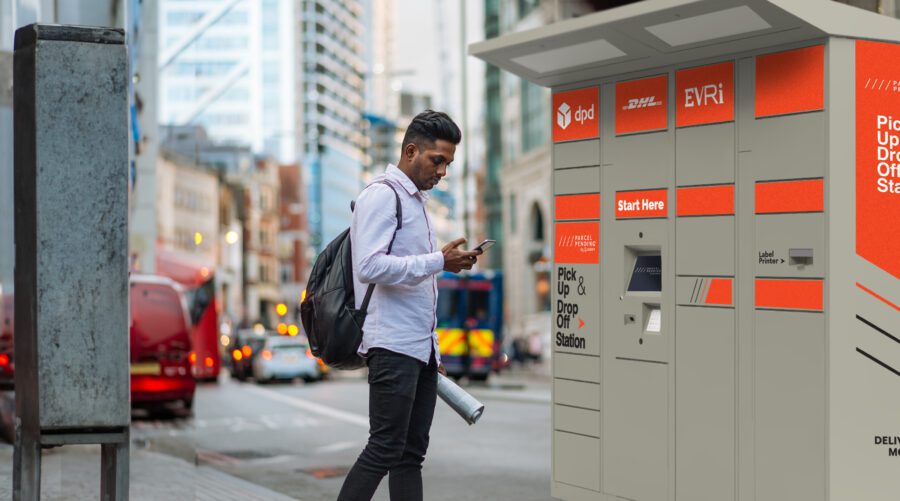
Multifamily
A Complete Guide: Investing and Managing a Multifamily Property
Written by: Parcel Pending
6 Min Read
Published: March 14, 2021
Updated: April 3, 2023
2021 might just be your year for dipping your toe into multifamily property management. As you analyze commercial real estate investing, here is a solid primer to investing and managing a multifamily property including the rationale, steps to consider before purchase, adding value after purchase, and ongoing opportunities to continue to attract and retain residents.
Before: Considerations of Investing
It’s Still Location, Location, Location
Just like retail investment, location is crucial. Look at demographic information, school locations, crime reports, tax records, retail shopping data, and any changes that will cause a huge shift in demand for housing such as a big employer or shopping center moving in or out of the area. Also, transportation is also key. Is there mass transportation near the investment property? Is there easy access to freeways? Savvy multifamily investors utilize all available data.
The Case for Investing
CBRE forecasts a 6% increase in net effective rents and a return to pre-COVID vacancy levels for 20211. Further, occupancy rates were an astounding 96.3%. Since a multifamily property is simply two or more residential units, it’s both less complicated than other asset classes (retail, hotels, or office space), and it’s familiar to homeowners. Moreover, banks typically finance these investments in much the same way that they issue mortgages with competitive interest rates. Remember, too, the magic numbers. Four or fewer units remain a residential investment. Five or more units bump up your real investment from residential into a commercial category replete with commercial agents and loans.
Multifamily management should also consider value-added opportunities for increased resident satisfaction and improved cash flow. This list includes ancillary sources of income such as coin laundry, parking space rental, and furniture rental options. Revenue from these sources add to your monthly income generated.
Crunch the Numbers
Of course, the biggest decisions before investment come down to the financials. You should carefully crunch the numbers and estimate your net operating income (NOI)2. In general terms, NOI is the difference between your estimated monthly rental income and estimated monthly expenses of your multifamily rental property.
During: Offering the Right Mix of Amenities
Pets as the Ulti-Mutt Amenity
The pandemic showed multifamily property and real estate managers that residents are lonely and craving furry friends. According to 2020 CoStar data, pet-friendliness ranks in the top three amenity searches and remains a competitive advantage for apartment communities. Further, online pet retailer Chewy noted a 5.7% increase in pet-owning households last year and noted that the company’s own data showed a significant increase in customers’ creating pet profiles, including a 40% increase in profiles for newly adopted pets3.
Space to Work, Workout, and Entertain
As our homes became the epicenter of our lives, the demand for more space skyrocketed. Whereas residents used to settle for small apartments in urban areas close to theatres, movies, and dining, today residents are looking for larger spaces in rural and suburban areas that allow them space for exercising, watching movies, and working from home.
In striking contrast to a March 2020 survey where price and safety were top concerns, results of 10,000 residents by RENTCafé this March uncovered that open-air amenities and more space were the top requests4. Property management should take note of these shifting trends.
Work from Home Accommodations
With 42% of employees working from home, speedy Internet is a must5. A new tenant expects that broadband will be available from the day they move in. More importantly for property management, however, is that they are willing to pay higher rent for high-speed internet access—about $35 more6.
Residents are also interested in safe co-working spaces. Camden Living, for example, is investing in work pod stations throughout their communities. This way, a renter in need of additional space or a change of scenery can have a private place to be creative, while remaining connected to the community Wi-Fi network.
The need for space and remote work accommodations intersects as residents look to carve out functional and ergonomic work areas. Zoom-friendly backgrounds are essential as are organized workspaces that allow for work/life balance.
Managing the Deluge of Parcels with Smart Lockers
No modern apartment complex would be complete without smart lockers. Whereas this amenity might have been once been considered “nice to have,” it is now a necessity for remaining competitive in the apartment industry and practicing smart property management. With packages bombarding the mail room due to the exponential growth in online shopping, residents expect to have their packages securely stowed. Most importantly, installing package lockers can lift lease renewals by a jaw-dropping 40%!
Demand is rising too for refrigerated lockers thanks to same day delivery. Researchers in November 2020 estimated that 38.7 million shoppers placed at least one online grocery order for delivery or pickup order during the preceding 30 days, up 3.6% from 37.5 million in August7.
Lockers offer both utility and safety and are an essential component of package room solutions. Residents are automatically notified by email, text, or mobile app alert that a delivery has arrived. They are then given a barcode to scan for contact-free access to their delivery.
After: The Need for Ongoing Maintenance & Improvements
Service as a Secret Weapon
During the pandemic as companies scrambled to get their operations working, the customer experience plummeted. One year into the pandemic with almost 3 million shots administered daily in the United States, consumers and residents aren’t willing to put up with sub-par customer service any longer. In fact, lack of maintenance and appropriate response times is a top ten reason why residents leave multifamily buildings. As a property manager, now is your time to demonstrate value that builds loyalty and satisfaction.
Digital Tools that Add Convenience and Communication
The days of posting flyers at the mailboxes are over. Residents today expect meaningful communications from multifamily property managers with updates on openings, closings, lease renewals, and renovations. Mobile Doorman is one of the fastest-growing apps because it makes your life as a property manager easier. You can enable push notifications so that communications updates are instantaneous. Residents are also able to upload photos, schedule maintenance appointments, renew their lease, and even manage their move-in checklist.
Virtual tours have also morphed from a “nice to have” to a necessity in 2021. A recent study of C-level executives reported tracking the percentage of leases converted from virtual and self-guided tours at 39%8. Recent statistics demonstrate that 67% of people want more businesses to offer virtual tours9. And customers aged 18 to 34 are 130% more likely to book a place if there is a virtual tour.
Multifamily real estate investing requires understanding the market, your financials, and ways to add value. As immunity increases and the economy returns, now is the time to investigate how to attract and retain residents in 2021.
To see how smart lockers can play a key role in the equation, contact a Parcel Pending sales representative today.
Sources:
- Rotman, Catherine. Equilibrium by TF Living. Top Multifamily Property Management Trends Expected in 2021. (2021, January 8). https://tfliving.com/2021/01/08/top-multifamily-property-management-trends-expected-in-2021/.
- Esajian, Paul. FortuneBuilders. 8 Numbers to Know For Your Property Value Estimator. (n.d.) https://www.fortunebuilders.com/property-value-estimator/.
- Armental, Maria. The Wall Street Journal. Chewy Turns Quarterly Profit as Covid-19 Boosts Online Sales. (2021, March 30). https://www.wsj.com/articles/chewy-turns-profit-as-covid-19-boosts-online-sales-and-pet-ownership-11617139571?.
- Ciuntu, Alexandra. RENTCafé. One Year Later: Pandemic Shifts Renters’ Priorities as ‘More Space’ Beats ‘Cheaper’, Survey Shows. (2021, March 9). https://www.rentcafe.com/blog/rental-market/real-estate-news/one-year-later-pandemic-shifts-renters-priorities-as-more-space-beats-cheaper-survey-shows/.
- Wong, May. Stanford. Stanford research provides a snapshot of a new working-from-home-economy. (2020, June 29). https://news.stanford.edu/2020/06/29/snapshot-new-working-home-economy/#:~:text=We%20see%20an%20incredible%2042,working%20on%20their%20business%20premises.
- Friedman, Robyn. Multi-Housing News. How to Attract Remote Workers to Your Apartment Community. (2021, January 28). https://www.multihousingnews.com/post/how-to-attract-remote-workers-to-your-apartment-community/.
- Berthene, April. Digital Commerce 360. Merchants use stores to tap into same-day delivery. (2021, April 5). https://www.digitalcommerce360.com/article/coronavirus-impact-online-retail/.
- J Turner Research. (2020, December). Multifamily Industry Leaders Survey: Attitudes and Outlook About the Multifamily Industry from Industry Leaders [Report]. Retrieved from: https://www.jturnerresearch.com/multifamily-industry-leaders-survey-2020
- Digital in the Round. 13 Mind-Blowing Virtual Tour Statistics [Updated for 2021]. (2021, March 11). https://digitalintheround.com/virtual-tour-statistics/.



